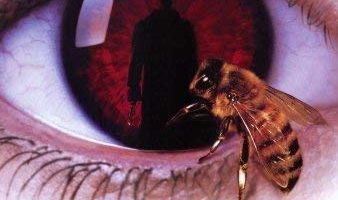
The psychological crime series “Mindhunter” began its long journey to television screens in 2009 when Charlize Theron gifted a book to her friend and collaborator, director David Fincher. The book was “Mindhunter,” an account of the early years of the FBI’s Behavioral Science Unit, which began when a small number of special agents introduced the concepts of psychological profiling to law enforcement.
The goal was to preemptively catch dangerous murderers by creating an index of “types” of killers so that officers and FBI agents could predict the behaviors and killing patterns of the various types, creating the modern vernacular of true crime, including the now household term “serial killer.” To do this, the early progenitors of this method visited prisons to converse with some of the most infamous and vicious murderers of all time to find out what made them tick.
In 2017, “Mindhunter” premiered on Netflix, with its second season dropping in late summer of 2019. The plot follows fictitious FBI agents Holden Ford and Bill Tench as well as psychology professor Wendy Carr during the late 1970s and early 1980s. They slowly unravel a series of spree killings in the field while simultaneously visiting prisons across the country to sit across the table from the likes of Edmund “the Co-Ed Killer” Kemper, Richard Speck, David “Son of Sam” Berkowitz and Charles Manson.
Ford, Carr and Tench slowly build their profiling method as they progress through each interview and case, yet their own personal demons and the psychological strain of their work leads them closer to the darkness than they’re comfortable with.
Fincher—a veteran filmmaker whose work is viscerally engaging, yet subtle and precise—brings his technical prowess and eye for detail to the series, of which he is a producer and often a director. Fincher’s visual style, as elaborated on in a brilliant video essay by YouTuber Nerdwriter1, is predicated upon using his camera to subtly indicate the track he wants viewers’ eyes to follow.
Fincher often does this through the use of incredibly quick and unflashy, yet impressive camera tilts, pans and swerves. As Richard Speck suddenly bursts upward from his chair in a fit of rage during his interview, the camera darts up—placing the audience in the agent’s perspective. The viewer’s eyes almost flinch because the camera suggests that Holden flinches at this unexpected and violent movement.
Fincher uses this technique again when Holden awakens from an anxiety-induced paralysis. He’s in shock, shaking with adrenaline, and the camera, which is otherwise stable, begins to subtly jerk in the exact directions of Holden’s body as he struggles in his hospital bed. Fincher is able to create a sense of unrest and aimless struggle without resorting to disorienting shaky cam effects. He’s just that good.
Fincher’s use of creeping, slow pan shots and Steadicam gives a cold, clinical feel to his work and “Mindhunter” is no exception. Fincher’s calculating and eerily calm style matches the detached analysis of the jaded detectives perfectly, and only serves to highlight the moments when he chooses to add emphasis to a moment by breaking from his own established visual language.
The second season also adds on Andrew Dominik, another experienced filmmaker who is able to replicate Fincher’s style in his absence to an absurd degree. Dominik’s mimicry might be seen as cheap if he was doing it on his own, but because a series requires a certain consistency that individual films do not, Dominik can only be praised.
Another YouTuber, KaptainKristian, produced a video regarding Fincher’s use of “invisible” visual effects. The CGI is so subtle and carefully placed that it fails to register with the viewer at all. Fincher uses these minor digital renderings to create a convincing 1970s and 1980s American landscape without constituting an absurd production budget.
There are some shots that are so beautifully constructed out of both real sets and digital trickery that they could appear to be a carefully composed photograph straight from the era. Trees and houses are often placed into shots to obscure any modern architecture or vehicles. Entire cityscapes are placed in the background of scenes shot on a studio set or a different location to create an epic scope to the show’s world on a small-scale budget. The placement of these objects in the background allows them to be rendered out-of-focus, which create the sense of an actual camera capturing these images—diverting viewer attention from possible imperfections of the effect and toward the actual subject of a shot.
While the lead performances on “Mindhunter” are understated and brilliantly subtle, the real stars of the show are the various guest stars who inhabit the roles of real-life serial killers. One of the show’s casting directors, Laura Mayfield, has had to stress how nice the actors playing these notorious killers are because their performances are so convincing.
Cameron Britton’s Emmy-nominated performance as Ed Kemper, which he should’ve won, is one of the most uncomfortable performances on television. Britton’s Kemper is exceedingly kind and polite, so much so that the viewers—and Holden—are practically charmed by him. This belies Kemper’s true nature as a highly intelligent and manipulative sexual sadist, something the series shows glimpses of through his brief spurts of chillingly tranquil, misogynistic rage.
Damon Herriman plays Charles Manson, a role he also played in “Once Upon a Time in Hollywood,” and captures Manson’s erratic behavior and fidgety mannerisms, which are all part of his calculated effort to dominate a room in any way he can—whether it be by derailing a conversation or contorting his body and face to appear unpredictable and intimidating. Both these performances have inspired YouTube side-by-side comparisons between the real subjects and these performances, and the accuracy is unsettling.
“Mindhunter” is less a crime series and more a carefully composed and steady plummet into the darkest corners of American crime history, and Fincher’s intense devotion to masking this effect and choosing restraint over sensationalism is what makes the series so special.
The show is currently on indefinite hiatus while Fincher pursues another film project, but he’s stated that he wants to make five seasons. One can only hope he does because “Mindhunter” is one of the few Netflix originals that manages to rival HBO and theatrical film, and has quickly established itself as one of the most hypnotically gripping, cinematic and unnerving crime dramas on television.
Matt Cotter can be reached at ryleejackson@sagebrush.unr.edu, or on Twitter @NevadaSagebrush.












